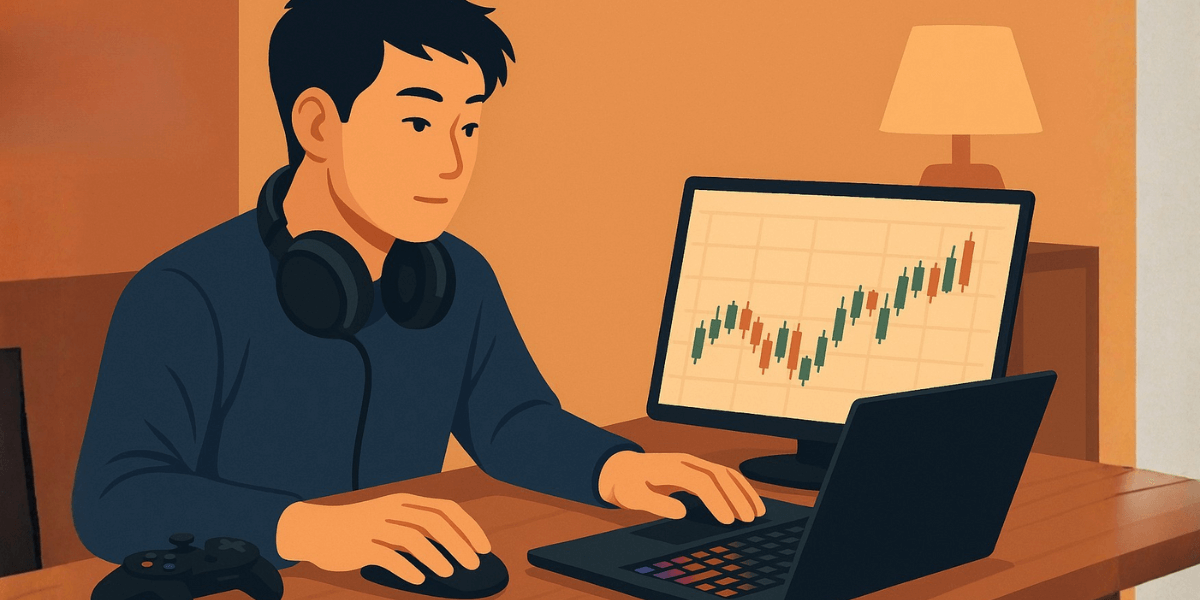Fractals are a series of five consecutive price bars or candlesticks traders use to identify potential market reversals. The third or the middle candlestick is a key information point in the pattern, as it has to be the lowest price point for a bullish fractal or the highest price point for a bearish one.
Technical analysts use fractals to get insights into price movement and spot potential turning points in the market.
Fractals in Technical Analysis
Fractals represent patterns that repeat on different scales, mirroring the mathematical idea of self-similarity. A core concept of fractal geometry is that a larger structure is made up of smaller patterns that resemble the larger shape.

In forex trading, fractals allow traders to visualize and interpret market patterns. Understanding fractals provides a deeper comprehension of price action, helping traders improve the precision of their entry and exit points.
Identifying Fractals in Forex Charts
Fractals can take various forms, commonly categorized into three-bar or five-bar patterns. The standard fractal pattern in forex consists of five bars, with the middle bar indicating a high or low point.
- Bullish Fractal (Buy Signal): A bullish fractal occurs when the middle candle of the five-bar sequence forms a low, and it is flanked by two higher lows on each side. This indicates that selling pressure is diminishing, potentially signaling a market reversal to the upside.
- Bearish Fractal (Sell Signal): In a bearish fractal, the middle candle forms a peak higher than the other two on either side. This pattern suggests that buying pressure may be decreasing, hinting at an impending downward trend.
Using Fractals for Trading Strategies
Fractals can be extremely useful for developing trading strategies. Successfully identifying reversal points in the market is a good way to find trading opportunities with great risk-to-reward ratios.
A typical trading strategy involves waiting for a bullish fractal to form during a downtrend and then opening a long position upon the formation completion, setting the stop-loss slightly below the lowest point of the fractal.
The opposite works for an uptrend and a bearish fractal, with the stop-loss going just above the highest point of the fractal or its middle candlestick.
Combining Fractals with Other Indicators
Fractals are often combined with other technical indicators, such as moving averages or the Alligator Indicator, which uses multiple smoothed moving averages to help define market trends.
- Alligator Indicator: Bill Williams, the creator of the fractal indicator, also developed the Alligator Indicator. By combining the two, traders can use fractals to spot market reversals and the Alligator to confirm trend directions.
- Support and Resistance Levels: Fractals help traders determine key support and resistance levels. Once identified, these levels can act as boundaries where price action tends to reverse or break through.
Pros and Cons of Using Fractals in Forex
Like with almost every other technical tool, using fractals has upsides and downsides.
Advantages of Using Fractals
Fractals help identify possible price reversal points, providing more precise trade entries. By maximizing the risk-to-reward ratio, traders don’t have to gain as many winning trades to be profitable. Fractals are also applicable to any time frame, thus with a bit of practice traders can easily identify them on different timeframes and different markets.
Challenges with Fractals
One of the biggest problems with fractals is their lagging nature. A fractal pattern is not confirmed until two bars following the fractal patterns have closed. That means a substantial part of the move can occur before the pattern is confirmed, resulting in missed opportunities and slower responses to market changes.
Furthermore, fractals are notorious for generating numerous signals, many of which might be false—especially in volatile or sideways markets. For this reason, traders refrain from relying on fractals alone.
Risk Management with Fractals
Fractals can improve risk management by helping traders set more accurate stop-loss levels. For instance, if a trader opens a long position based on a bullish fractal, the stop-loss can be set just below the fractal low, limiting the potential downside if the trade doesn't work as anticipated.
However, as with any strategy, traders must consider position sizing and use other technical tools to avoid excessive risk.
Frequently Asked Questions
How do fractals work in forex?
Fractals identify potential reversal points in the market. They’re a five-bar sequence with the middle (third) bar representing the pattern's highest or lowest point.
Is fractal a lagging indicator?
Fractal is a lagging indicator as the pattern isn’t completed until two consequential candles close. Thus a substantial portion of the move can occur before the conditions for entering in the trade align – resulting in missed opportunities.
Note: Any opinions expressed in this article are not to be considered investment advice and are solely those of the authors. Singapore Forex Club is not responsible for any financial decisions based on this article's contents. Readers may use this data for information and educational purposes only.







